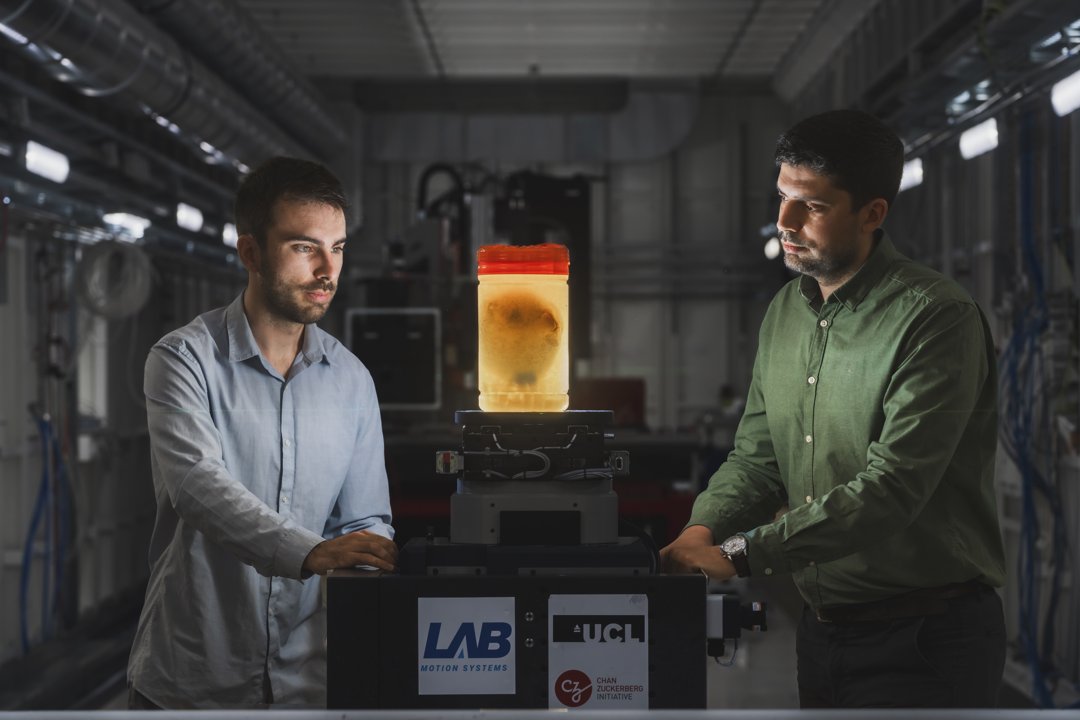The Heart Atlas
Exploring the detailed structural features of the heart using Hierarchical Phase-Contrast Tomography (HiP-CT)
During my postdoc at the European Synchrotron Radiation Facility I used Hierarchical Phase-Contrast Tomography (HiP-CT) to depict the macro- to microanatomy of structurally normal and abnormal adult human hearts ex vivo. For more information see the related paper

Joseph Brunet (left) and Hector Dejea (right) positioning a heart during an experiment
HiP-CT allows for high-spatial-resolution, three-dimensional imaging of the heart, revealing histologic-level detail without the need for invasive sectioning or exogenous contrast agents. The study involved imaging two hearts: one from a healthy 63-year-old male and another from an 87-year-old female with a history of cardiovascular diseases.

Three-dimensional cinematic renderings of the control and diseased hearts in anatomic orientation
The imaging revealed intricate details of the myocardium, valves, coronary arteries, and the cardiac conduction system, achieving resolutions ranging from 20 µm/voxel to as fine as 2 µm/voxel, allowing to observe some cells such as myocytes.

Three-dimensional renderings showing segmentation of the coronary arterial and venous tree in the diseased heart
HiP-CT also enabled the visualization of pathologic features such as fatty infiltration, vascular supply disruptions, and structural changes due to diseases like myocardial infarction and atrial fibrillation.

Hierarchical phase-contrast tomography scans of ventricular myocardium in the diseased heart
This study demonstrates the potential of HiP-CT for detailed, non-destructive imaging of the heart, which can greatly enhance our understanding of cardiac anatomy and disease, paving the way for better diagnostic and therapeutic strategies.

Mid-ventricular short-axis section of the ventricles in the control heart shows the feasibility of myomapping the orientation of myocyte aggregates